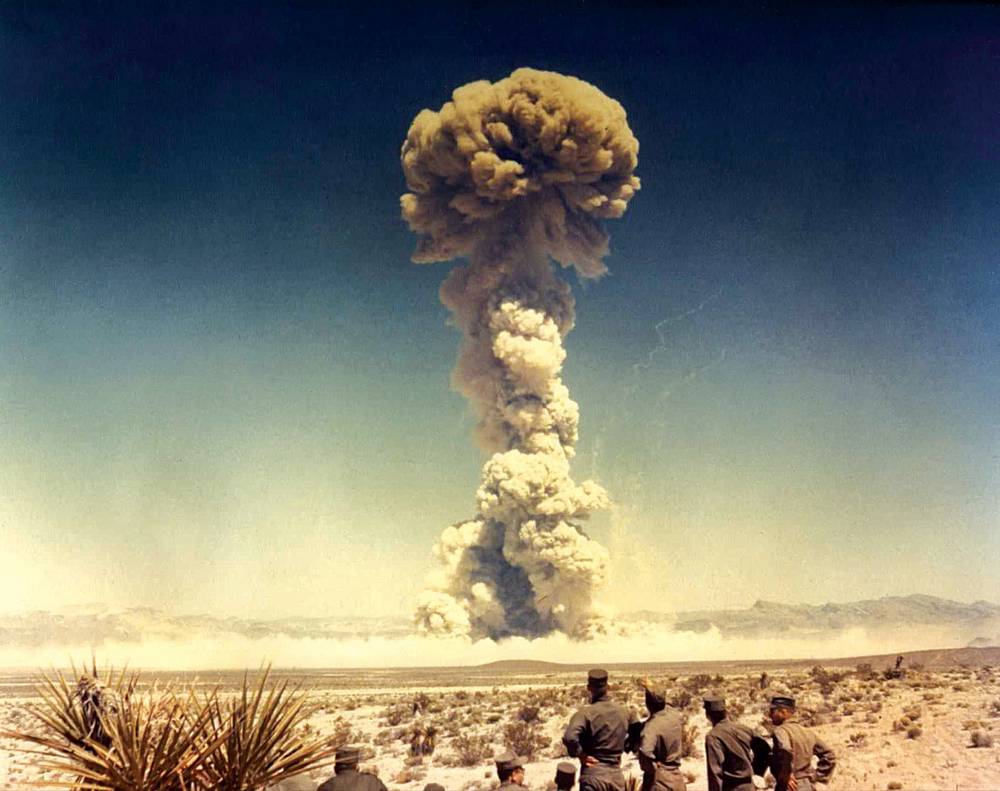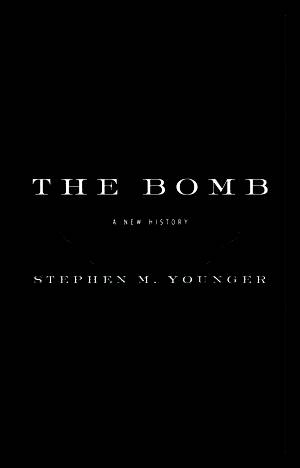About a thousand feet below the desert at the Nevada Test site are some two kilometers of tunnels, labs, plutonium and scientists. Often among them is the president of National Security Technologies, Stephen Younger.
“I feel perfectly safe there,” says Younger, a Las Vegan since taking over the subcontractor NST in 2006. “The Test Site is pristine.” Although there have been no nuclear tests since the 1992 Nuclear Testing and Comprehensive Test Ban, a lot still goes on at the Test Site, and a lot goes on in the mind of Younger, who is on a mission to educate people about nuclear weapons and nuclear politics.
He’s just published his second book, The Bomb: A New History (HarperCollins, $26.99), and written a guest editorial in the Wall Street Journal (January 10) with the purpose of sifting through our national and international nuclear history with an eye toward the political future.
“It’s much different than during the Cold War,” says Younger, who has a Ph.D. in physics and led bomb-design research at Los Alamos National Laboratory for 17 years. Although nuclear bombs don’t dominate the nation’s ethos the way they did in the Cold War, when people built bomb shelters and lived in fear of a world-ending war with the Soviet Union, nuclear weapons are still an enormously significant political issue that has been sort of swept aside, Younger says.
Now that the Nuclear Nonproliferation Treaty of 1970, signed by 190 countries, is coming up for review in 2010, Younger believes it is essential to renew the conversation lest the treaty “unravel.”
More
- Beyond the Weekly
- Amazon: The Bomb: A New History
- Nevada Test Site
- Atomic Testing Museum
- Looking into the nuclear abyss (Las Vegas Sun, 5/18/08)
The treaty was meant to halt the proliferation of nuclear weapons and encourage disarmament of nuclear states. But recent events make the review of that treaty more important—North Korea, Iran and Pakistan don’t appear to be looking toward a nuclear-bomb-free globe.
“It’s quite a different world. This book is written to educate the public. And it was also written to inform members of Congress,” says Younger. “When I was growing up there were very few countries that could cause mass destruction. Today, weapons of mass destruction are beginning to proliferate to any country that wants them ... we’re crossing an historic threshold.” Many members of Congress, and even military leaders, are too young to remember the details of the Cold War, he says.
Although Younger spends a good deal of pages in The Bomb reminding readers that nuclear science is incredibly complicated, and that it is a myth that anyone can look up “How to make a nuclear bomb” online and design one in their garage or desert hideaway, he also says we must educate ourselves about the treacherous politics involved in a world scenario where more nations do have nuclear aspirations.
Essentially, what Younger observes is that Congress has set aside interest in nuclear politics, given the pressures of responding to other forms of terrorist attacks. But, he says, international “patience is wearing thin” on expectations for nuclear disarmament, and the United States needs to review its own treaty participation.
“Three main arguments are put up against nuclear-weapons elimination: that nuclear weapons cannot be uninvented; that a cheater could blackmail the world with only a few weapons; and that some targets cannot be destroyed with anything less than a nuclear explosion,” he wrote in the Wall Street Journal.
“[But] nuclear elimination boils down to how much risk one is willing to take, weighed against the benefits of a nuclear-free world. There is no easy answer ...
“Perhaps the most prudent course would be to show good faith by reducing existing nuclear stockpiles while developing rigorous verification technologies that would provide assurance against cheaters.”
Developing those verification technologies is part of what Younger’s company is doing at the Nevada Test Site: testing detection devices and designing more precise anti-smuggling technology.
“A failure of the international regime to halt and reverse the spread of nuclear weapons is too horrible to contemplate—all the more reason to take whatever actions we can to assure the success of next year’s review conference,” Younger wrote.
He says he’s optimistic about the Obama administration’s position on nuclear arsenals. “I think it’s a very favorable political climate. Obama is going to take a hard look at the weapons we have and consider what we need. ... There’s not a lot of intellectual capital [in Washington, D.C.], but the new team is coming in with some.”
When not tinkering with poisonous plutonium or trying to revive an informed national dialogue about mass destruction, Younger is pursuing a related hobby and third book, about the anthropological study of human violence. So far, he concludes from his Vegas home, “I think there is good scholarly data that we are not inherently violent. But we should understand the conditions under which we are violent.
“If you get us together in large groups, all bets are off.”









Previous Discussion: